Last updated: November 24, 2021
Article
Common Grasses of Scotts Bluff National Monument
The presidential proclamation which established Scotts Bluff National Monument in 1919 also established the Monument's original boundaries. This preserved some of the best native prairie in the region, prairie relatively untouched by human disturbance.Natural prairie grasses are the predominant vegetation cover of the Monument's more level areas. Approximately 40% of the 3,003 acre Monument is mixed-grass prairie. The prairie is dominated by threadleaf (blackroot) sedge, and needle-and-thread grass, both cool season species. Together these two species are the dominant ground cover (82%). Other common native grasses of the prairie include western wheatgrass, junegrass, blue grama, prairie sandreed, little bluestem, and side-oats grama.
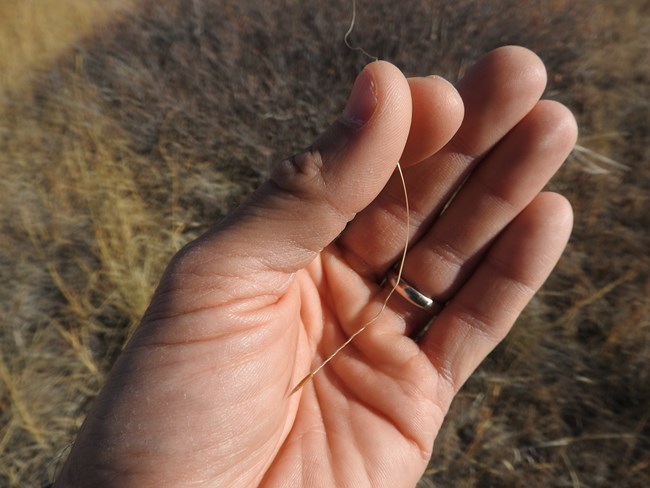
NPS/Eric Grunwald
Needle-and-Thread Grass
Needle-and-Thread Grass (Hesperostipa comata) is a native, perennial, cool -season bunchgrass, meaning it lives for multiple years and grows in clumps rather than forming mats of turf. It grows to heights of one to four feet tall.The most distincitve feature of needle-and-thread grass is the four to five inch-long twisted awns (bristle-like appendages) that are attached to the seeds. These awns are hygroscopic, meaning they absorb moisture from the air. When they absorb moisture they slightly untwist and the sharply pointed seed head can then drill itself into the ground.
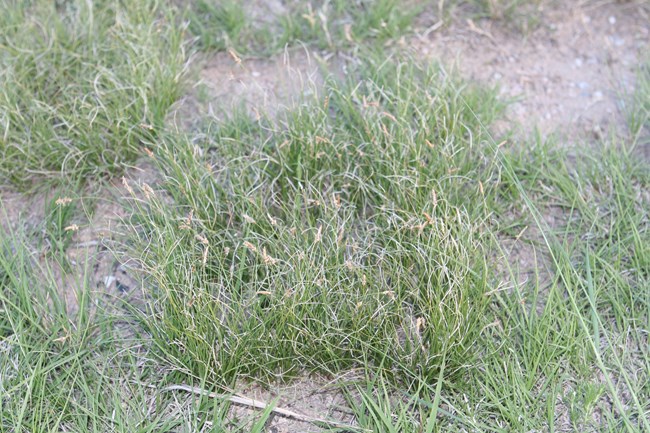
NPS image
Threadleaf (Blackroot) Sedge
Threadleaf, or Blackroot, sedge (Carex filifolia) is technically not a grass. Sedges, like grasses, tend to form in clumps. Unlike grasses, sedges have three-sided stems. Threadleaf sedge is a cool-season, sod-forming, drought-resistant, low-growing, native perennial grass-like plant. It grows in bunches that are four to six inches wide, and bears hollow stalks that grow to heights of two to fifteen inches tall.Threadleaf sedge sends out numerous tough and wiry roots. They do not tend to grow deep, but instead spread away from the plant in distances of two to 2.5 feet.
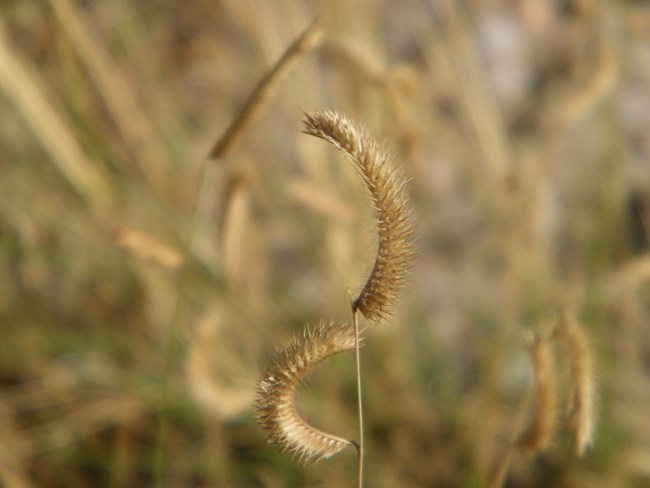
NPS image.
Blue Grama
Blue grama (Bouteloua gracilis) is a native warm-season grass. In some areas of its range it is sod forming, while in other areas, like at Scotts Bluff National Monument, it forms bunches. It grows from six to 24 inches tall and sends out a prolific root system.Perhaps the most distinctive feature of blue grama are the comb-like spikes at the end of the stems. They somewhat resemble eyelashes, giving blue grama the nickname "eyelash grass." These comb-like structures bear flowers which, if pollinated, bear oblong-elliptic brown seeds that are 2.5 to 3 mm long.
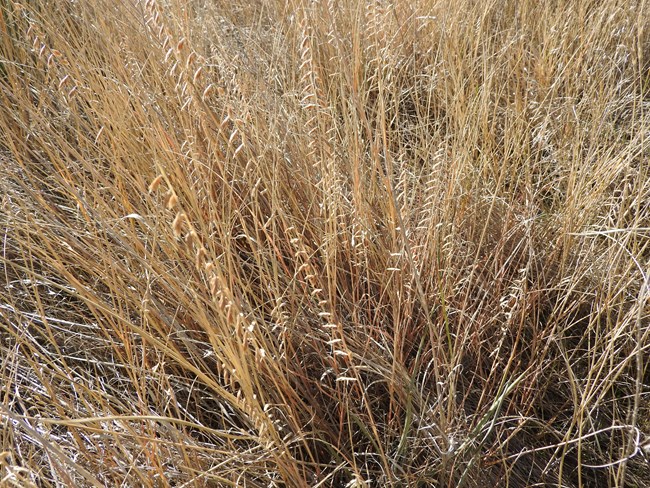
NPS/Eric Grunwald
Sideoats Grama
Sideoats grama (Bouteloua cutipdendula) is a native, perennial, clump-forming, warm-season grass that grows from 12 to 42 inches tall. A distinctive feature of sideoats grama are the small, oat-like seeds that dangle off the side of the zig-zagging stalks. Because it greens up earlier in the growing season, and remains green longer into the fall than other plants, blue grama is an important browse for wildlife. The leaves of sideoats grama are grazed by deer, elk and other mammals. Seeds are eaten by several species of birds.
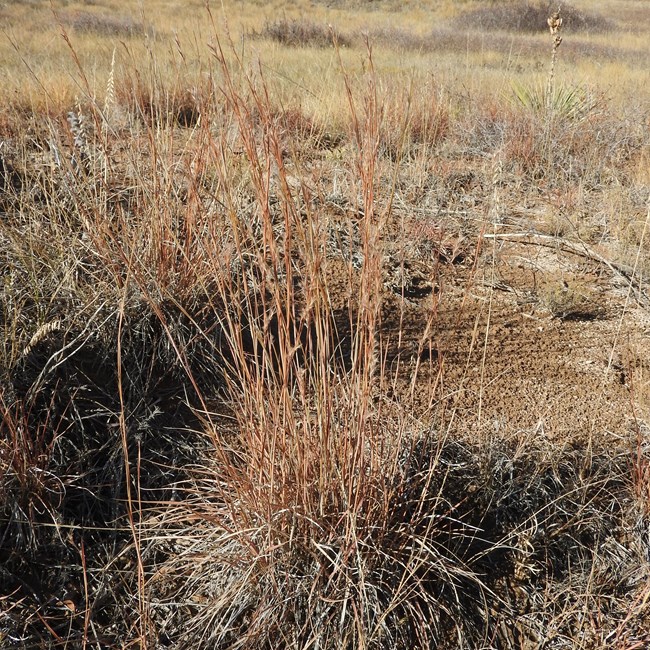
NPS/Eric Grunwald
Little Bluestem
Little bluestem (Schizachyrium scoparium) is a native, warm-season, clump-forming grass. The leaves grow in one to two foot high clumps until late summer when it sends up flowering stems that can grow to heights of five feet tall. Like the name suggests, young leaves are a bluish-color. However, by fall they change to an attractive copper color.
The leaves of little bluestem are browsed by deer. Grasshoppers, beetles, spittlebugs, leafhoppers, and other herbivorous insects also eat the vegetation. Bumble bees, caterpillars of at least one species of skipper, and several small mammal species may overwinter in the protected space at the base of the clumps.
